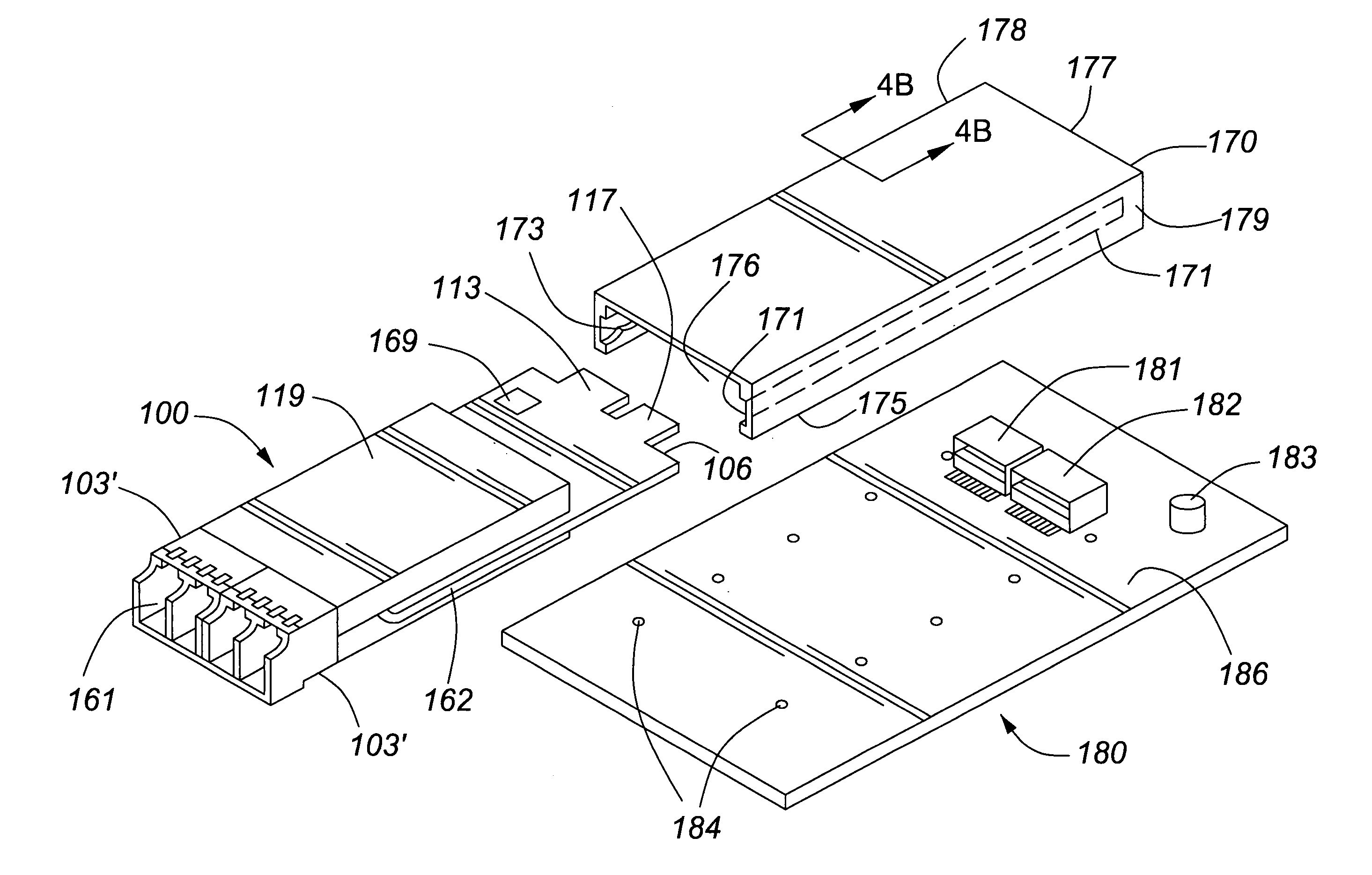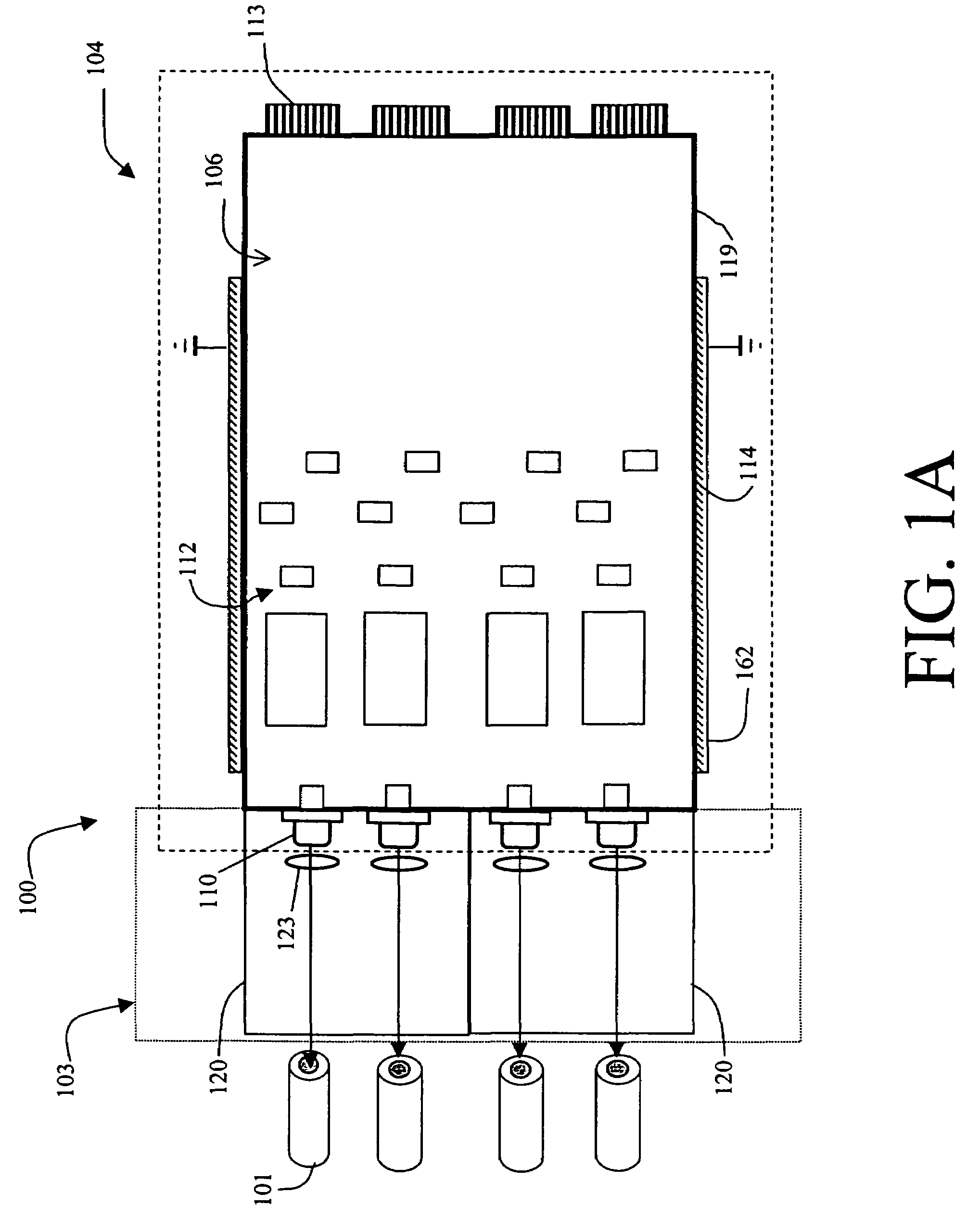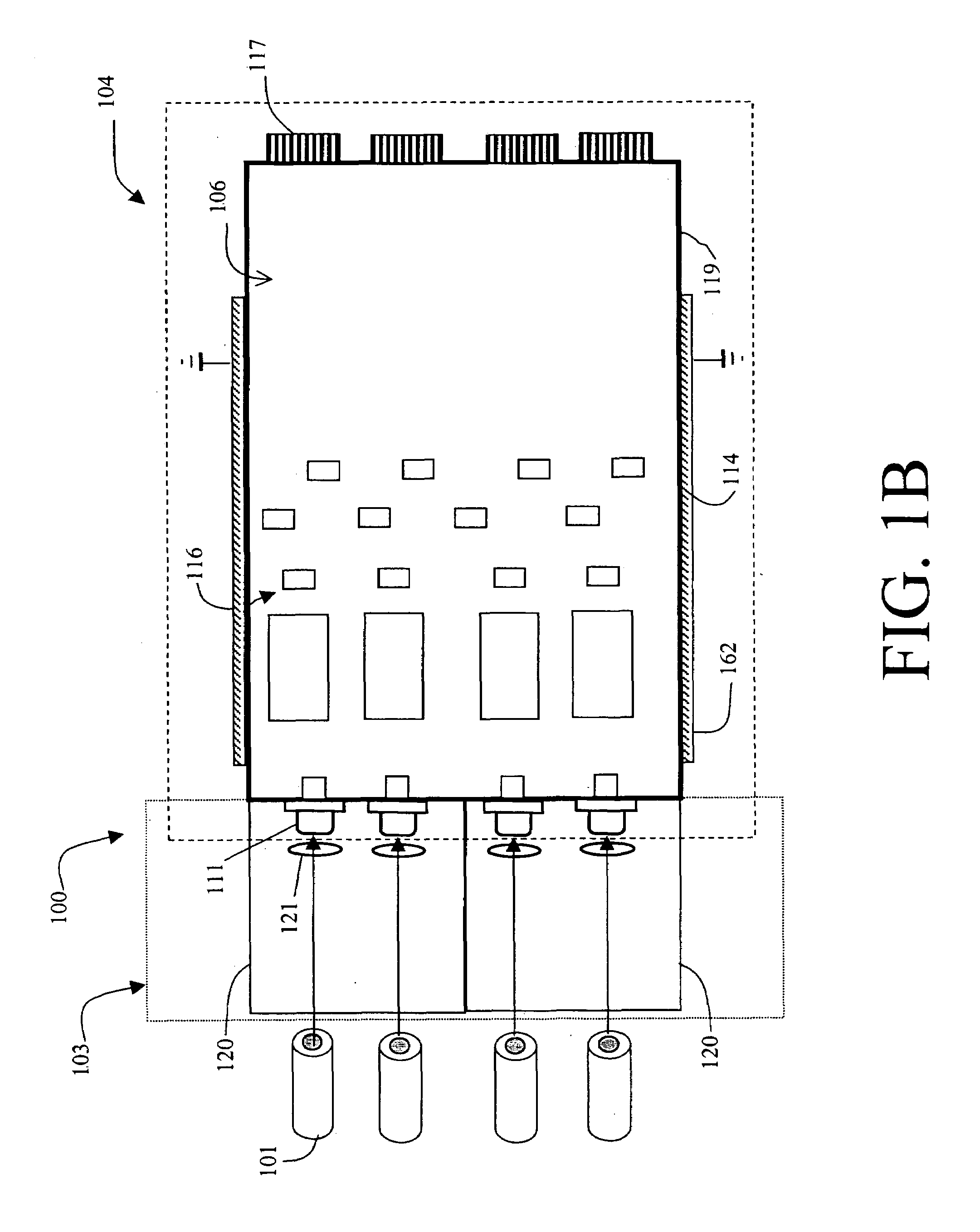Method and apparatus for parallel optical interconnection of fiber optic transmitters, receivers and transceivers
- Summary
- Abstract
- Description
- Claims
- Application Information
AI Technical Summary
Benefits of technology
Problems solved by technology
Method used
Image
Examples
Embodiment Construction
[0021]In the following detailed description of the present invention, numerous specific details are set forth in order to provide a thorough understanding of the present invention. However, it will be obvious to one skilled in the art that the present invention may be practiced without these specific details. In other instances well known methods, procedures, components, and circuits have not been described in detail so as not to unnecessarily obscure aspects of the present invention.
[0022]The present invention includes a method, apparatus and system for parallel optical interconnection of fiber optic transmitters, receivers, and / or transceivers.
[0023]Referring now to FIG. 1A, a simplified cutaway view of a first embodiment of the present invention is illustrated. FIG. 1A illustrates a fiber optic module 100 (a fiber optic transmitter, receiver, or transceiver module) for coupling to a plurality of fiber optic cables 101. The fiber optic cable 101 may be individual cables or a ribbo...
PUM
 Login to view more
Login to view more Abstract
Description
Claims
Application Information
 Login to view more
Login to view more - R&D Engineer
- R&D Manager
- IP Professional
- Industry Leading Data Capabilities
- Powerful AI technology
- Patent DNA Extraction
Browse by: Latest US Patents, China's latest patents, Technical Efficacy Thesaurus, Application Domain, Technology Topic.
© 2024 PatSnap. All rights reserved.Legal|Privacy policy|Modern Slavery Act Transparency Statement|Sitemap



